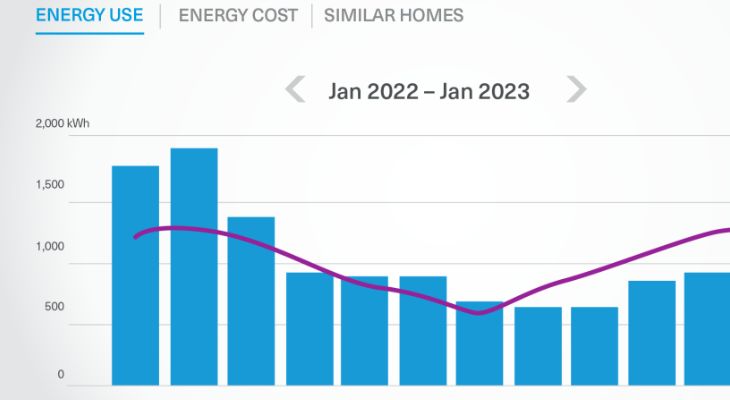When you receive your electricity bill you may notice the amount due is largely based on the number of kilowatt-hours of electricity used during the month. An average American household uses approximately 900 kilowatt-hours a month, according to the U.S. Department of Energy. What does that mean exactly and how is it calculated? We have the answers.
Explaining a kilowatt

Each electrical device is given a power rating telling you how much power it needs to work. The rating is given in watts or kilowatts. A watt is a small unit of electricity named after power pioneer James Watt, a British engineer who invented the steam engine. A kilowatt is equal to 1,000 watts.
Wattage ratings vary vastly depending on the size, age and capacity of the device. For example, a refrigerator may use 120 watts where as an electric oven uses anywhere from 1,500-4,000 watts.
Calculating kilowatt-hours
A kilowatt-hour measures the amount of electricity a device uses when in power. A kilowatt of energy used by the device for one hour equals one kilowatt-hour. However, most devices don’t run constantly.
The power rating of your electrical device will determine how long it would take use one kilowatt-hour. If you have a 100-watt television, it would have to be turned on for 10 hours to use one kilowatt-hour of energy.
We have partnered with local libraries across Indiana and Michigan for you to check out The Watts it Cost energy meter, which can help identify which electronics and appliances are power hogs. To find your local library click here.
Getting more out of your energy dollars
Since you pay for the kilowatt-hours you use, why not get more out of your energy? Here are a few tips:
- Turn off and unplug devices when not in use. While plugged in, some devices continue to pull power.
- Use a “smart power strip” that will turn off standby power for electrical devices.
- Use kitchen and bathroom fans wisely. In one hour, these fans can pull out a house full of cool or warm air.
- Eliminate spare refrigerators or freezers. An extra appliance can add up to $150 to your bill each year.
For more energy saving tips, products, tools and programs, visit www.electricideas.com.